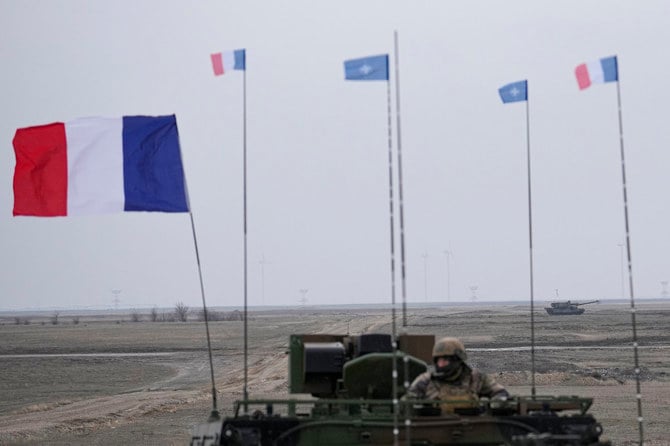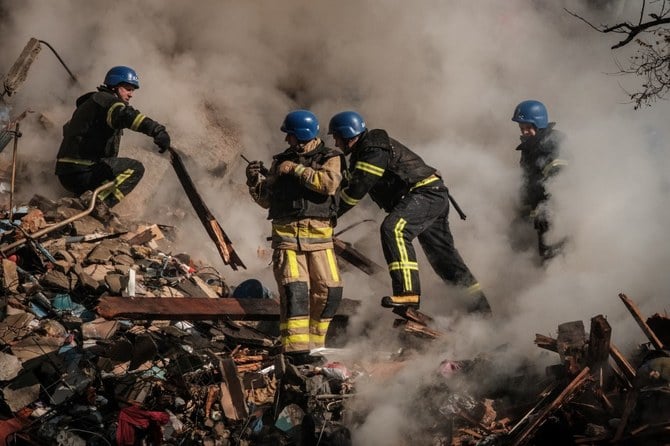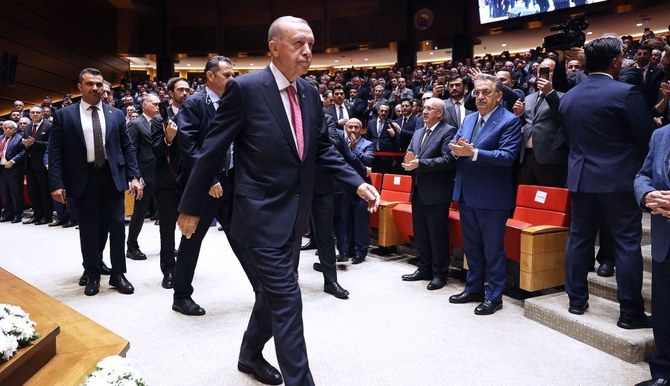
Turkish President Recep Tayyip Erdogan on Monday stated that he would not support Sweden’s NATO bid following weekend protests in Stockholm by a pro-Kurdish group and an anti-Islamic activist. Last May, Sweden and Finland submitted formal applications to join the alliance, but Ankara threatened to veto their accession over security concerns. Just a month later, at the NATO summit in Madrid, Turkiye, Finland and Sweden issued a joint memorandum that paved the way for the two Nordic countries to join the group.
Among the key rationales for Russia’s actions in February 2022 was the specific issue of NATO enlargement, which has again risen in visibility in the current news cycle. The Ukraine war will be a year old on Feb. 24, leading to questions about how much longer it has to play out. Is the NATO question an indication that the conflict might be resolved sooner rather than later or have things now become more complicated still, as has been seen in recent situations such as Syria, Libya and Afghanistan?
This may depend on several factors, including whether NATO further enlarges or not, and the view taken by its key opponents. Initially, Russia’s position was that Sweden and Finland joining the alliance posed it no threat. However, it is expected that Moscow will respond if NATO starts to build military infrastructure within the territory of either of these two nations. In recent comments, Chief of the General Staff of the Russian Armed Forces Valery Gerasimov confirmed that military decisions would be taken to respond to NATO’s enlargement, if confirmed. This suggests that Russia is expecting — or at least seeking to preempt — such an enlargement, whatever discussions are taking place within NATO.
Does the possibility of Sweden and Finland joining implicitly suggest greater military confrontation with Russia? It does not seem so as, realistically, Russia already shares borders with Western countries that are part of the NATO bloc and the West offers Ukraine military aid. According to Kiel Institute for the World Economy statistics, as of November, the largest donors of military aid to Ukraine included the US, which had pledged €22.9 billion ($24.9 billion), the UK (€4.1 billion), Germany (€2.34 billion), Poland (€1.8 billion), Canada (€1.3 billion), Sweden (€550 million), the Czech Republic (€480 million), France (€470 million), Estonia (€330 million), and Italy (€320 million). There also remains an ongoing interest in militarily supporting Ukraine, suggesting that, directly or indirectly, Russia has already been on the battlefield with NATO members over the past year.
Directly or indirectly, Russia has already been on the battlefield with NATO members over the past year
Dr. Diana Galeeva
This week’s news only further confirms these dynamics. Germany and the US have confirmed they will send Leopard 2 and M1 Abrams tanks, respectively, to Ukraine. Poland also plans to send the German-made battle tanks to Ukraine. The words of Gerasimov are plain enough to give the Russian view of this: “Our country and its armed forces are today acting against the entire collective West.” And this perspective is not unimagined in the West, either. Ted Galen Carpenter’s article for The Guardian, published just a few days after Russia’s invasion of Ukraine, had the title “Many predicted NATO expansion would lead to war. Those warnings were ignored.” The main thrust of the piece was: “It has long been clear that NATO expansion would lead to tragedy. We are now paying the price for the US’ arrogance.”
As we can see, the US and its NATO allies’ military aid to Ukraine is only increasing, as is the Russian defense budget. The conflict has passed the stage of calculating possible newcomers, but now rather concerns dealing with each other on the battlefield. Russia in November announced a 2023 defense budget of $84 billion — 40 percent higher than initially expected in 2021 — suggesting that it expects military actions to continue.
Alongside this entrenchment, there is the potential for further risks escalating the war to a new level. We may see new entrants, including Sweden, Finland or Turkiye, but also Belarus, China or Iran, with whom Russia has been carrying out military exercises. A Russian Foreign Ministry official this month said that Belarus could join the war if Ukraine decided to “invade” either Belarus or Russia. This is a dangerously ambiguous phrase, since there is divided understanding of the true territories and borders of the countries, especially Russia’s partly controlled regions of Ukraine — Donetsk, Luhansk, Kherson and Zaporizhzhia — which were incorporated following referendums last September.
The further enlargement (or not) of NATO will surely affect other scenarios in the war. Beyond Russia and Ukraine, there are already many actors heavily involved and this fact only complicates the situation. Stretching the NATO alliance might provoke other actors — China, Belarus or Iran, for example — into openly joining the conflict. Certainly, we may read the warning signs from the long-running recent conflicts in Afghanistan, Libya and Syria, which also involved many external actors, making sustainable solutions hard to identify.
The first anniversary of the start of the Ukraine war will quite possibly not be the last one, though we may say that the ongoing questions concerning NATO expansion will play a significant role in future developments.
• Dr. Diana Galeeva is a former academic visitor to St. Antony’s College, Oxford University (2019-2022). She is the author of two books: “Qatar: The Practice of Rented Power” (Routledge, 2022) and “Russia and the GCC: The Case of Tatarstan’s Paradiplomacy” (I.B. Tauris/Bloomsbury, 2023). She is also a co-editor of the collection “Post-Brexit Europe and UK: Policy Challenges Towards Iran and the GCC States” (Palgrave Macmillan, 2021).












